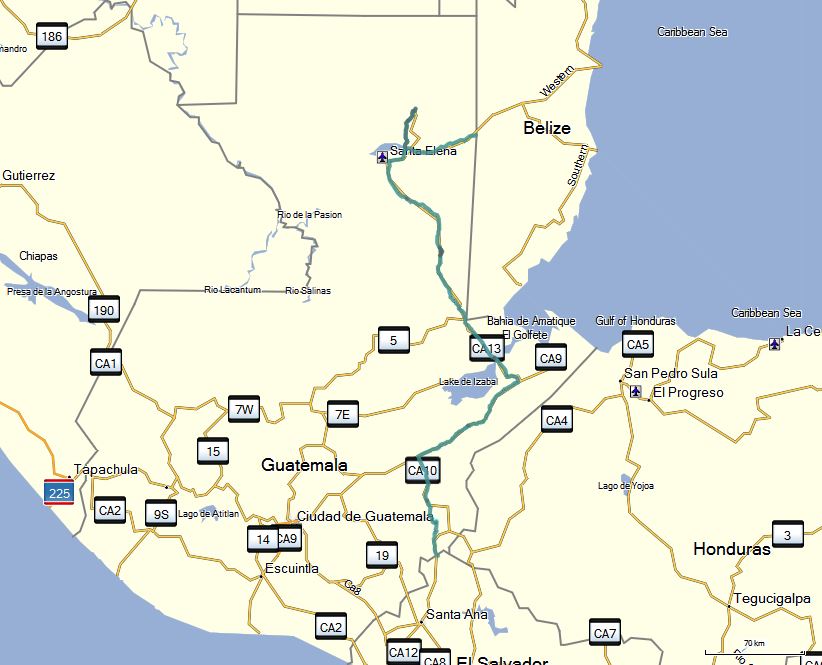Contents
Travel Information
We drove about 385 miles (620km) during the barely two weeks we were in Guatemala. In the following section, there are a few tips for people taking an individual trip through Guatemala in their own vehicle, whereby we can only report on the northeast sections of the country due to our travel route.
Visa
Upon entry, we got permission for a three-month stay. In the framework of the C4 Agreement, this is also valid for Honduras, El Salvador, and Nicaragua. We had to pay an entry fee of several quetzales; there was no fee for leaving the country.
Health Insurance
For our entire trip, we took out family travel insurance from STA-Travel, which had the best cost-quality ratio compared to other providers. It is especially important to ensure that there are no high deductibles.
Vehicle
Vehicle importation was quite simple, and we didn’t need any help. The chassis number was checked, and there was a fee of 160Q.
Diesel costs about 90C/l and is readily available.
Driving
The majority of the streets are in good condition. There are occasional pot holes, and sometimes there is no asphalt on the side streets. People drive riskily and at breakneck speed on the main roads; traffic regulations are usually ignored. Through roads in towns are usually clogged and demand your full attention. Basically, it is the rule of the strongest that prevails, however, in a considerate manner. Bully and insisting on your rights are unheard of here.
Eating and Drinking
A lot of food is sold from stands and along streets. The quality of it varies from fresh to slightly scruffy. We bought our food from market and street stands and had no problems. The typical food is tamales, which are meat and corn paste wrapped in maize or banana leaves. Drinking water can be bought in the familiar containers and costs about 15Q/20 l.
Safety
Guatemala is considered unsafe according to official reports, but we never had the feeling that we were in a dangerous area. We followed the suggestion given to us by locals not to drive at night. Before tours to remote areas, it is advisable to get information on-site about the situation at the destination. Since we didn’t meet any travelers who had had problems and didn’t hear any reports of bad experiences, we reached the conclusion that traveling in Guatemala is of no more concern than in other countries in Central America or Mexico.
Climate
We were there in December, and it should have been dry. Since the rainy season was working overtime, however, it rained almost the entire time and was hot and humid. The rain fell in tropical dimensions; when it rained, it poured.
Tips for traveling with children
The Guatemalans are very friendly towards children and were very open as soon as they saw our children. They often absolutely wanted to touch their blond hair, which our children had fortunately become used to. There are playgrounds and a lot of good opportunities for swimming. Tikal is great for children since they can climb around on the ruins there and can keep a lookout for rare animals in the jungle. In restaurants, the children are often given a little something, and, even at the market, fruit is sometimes pressed into their hands. As in Mexico, traveling with children is totally uncomplicated here.
Places to spend the night
Here is a map with all of our overnight stays in Central America.
Here is a list of each place with GPS coordinates, cost, and commentaries.
Here is the accompanying gpx-file for downloading.
Wild camping along main streets should be avoided. It is recommendable to look for safe places to spend the night.

Recent Comments